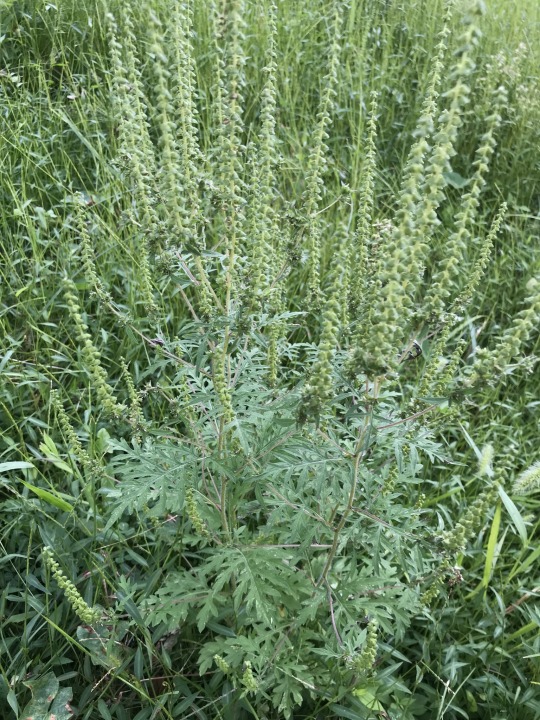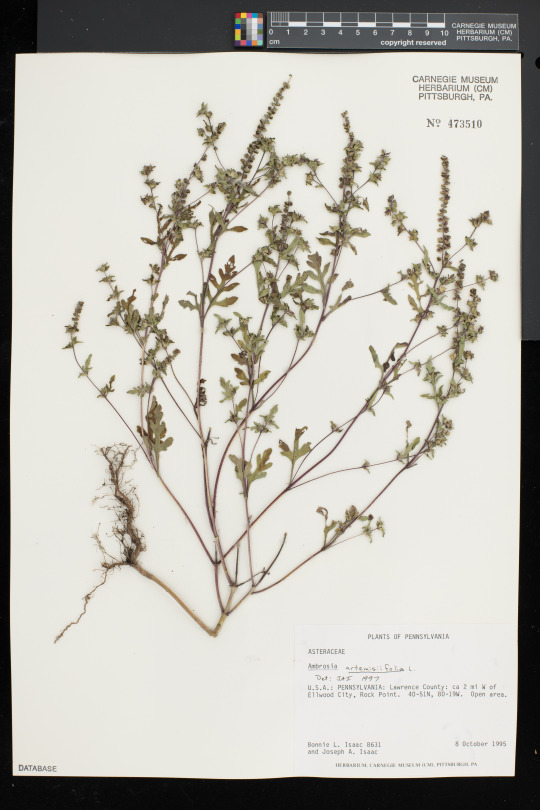by Mason Heberling

Fall allergies causing you grief?
Ragweed is a plant many people are (all too) familiar with. Or at least their bodies are. Common ragweed (Ambrosia artemisiifolia) is actually native to North America, but has been introduced across the world. In many cases, this plant (or other ragweed species) are to blame for seasonal pollen allergies known as “hay fever.” In summer and early fall, ragweed plants produce copious numbers of pollen grains, which are dispersed in the wind. Don’t blame those insect-pollinated plants with showy flowers for your allergy troubles. Wind pollinated plants like ragweed are your culprit.

This ragweed specimen was collected by Bonnie and Joe Isaac in Lawrence county, Pennsylvania on October 8, 1995. Bonnie is the collection manager in the Section of Botany at the Carnegie Museum of Natural History, an active plant collector and field botanist, and an expert on the plants of Pennsylvania.
Although ragweed is native to the US, historical records (pollen deposited in sediment cores) suggest that this species was far less common in North America before European colonization. This is perhaps not too surprising considering the species thrives in disturbed habitats that came with European colonization and urbanization. A study published in 2014 by Martin and colleagues in the journal Molecular Ecology extracted DNA from nearly 500 historic herbarium specimens dating back to the 1800s to measure the genetic makeup prior to widespread changes to the landscape in the late 19th century. Combined with data from recent collections, they found shifts in the genetic makeup of ragweed populations as the species was expanding in the United States.
Botanists at the Carnegie Museum of Natural History share digital specimens from the herbarium on dates they were collected. They have embarked on a three-year project to digitize nearly 190,000 plant specimens collected in the region, making images and other data publicly available online. This effort is part of the Mid-Atlantic Megalopolis Project (mamdigitization.org), a network of thirteen herbaria spanning the densely populated urban corridor from Washington, D.C. to New York City to achieve a greater understanding of our urban areas, including the unique industrial and environmental history of the greater Pittsburgh region. This project is made possible by the National Science Foundation under grant no. 1801022.
This specimen is now online: Ambrosia artemisiifolia.
